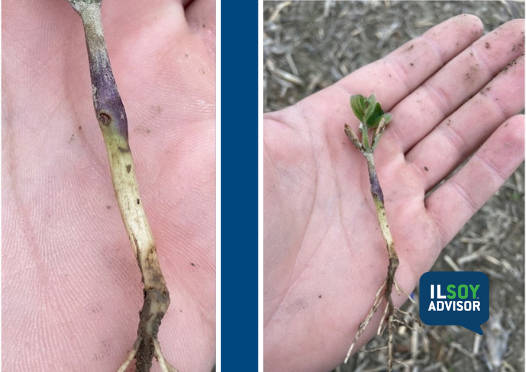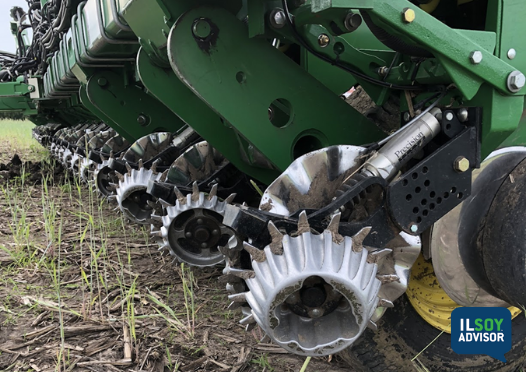ILSOYADVISOR POST
Agronomy: Don’t Discard Seed Treatments Without Proper Consideration
Going into 2016 growers are working hard to manage input costs to accommodate today’s low commodity prices, along with their expected yield, in order to return a profit. A lot of ”economic type” questions have come up this past winter surrounding seed selection and seed treatment needs, particularly on soybeans.
Soybean seed treatments have become standard throughout the industry to protect developing soybean plants from yield- and stand-robbing diseases and insects. Many of the products available for seed treatment include fungicides, insecticides, nematicides, biologicals and inoculants. With so many choices, growers are analyzing which seed products are necessary to protect their seed investment at planting and beyond.
Industry data collected over a number of years and environments continues to support the use of seed treatment, including fungicide (FST) and insecticide (IST). And with growers planting earlier and often in harsher soil conditions than they did a decade or two back, protecting the seed is critical. Protecting seed against soil-borne diseases with a fungicide will help control Pythium, Phytophthora, Fusarium and Rhizoctonia. This is critical to developing a consistent stand that hits your target population.
Growers targeting high-yield soybeans with early planting should plan on using fungicide seed treatment. In DuPont Pioneer® studies over the last 10 years the addition of insecticides with soybean seed treatment has shown an additional 1.6 bu per acre yield advantage compared to fungicide seed treatment used alone. As soybeans are planted early in the spring they become targets for emerging bean leaf beetle populations. This becomes a consideration when soybean seedlings are developing at the same time bean leaf beetle populations are searching for food following overwintering. Observations of field comparisons between FST alone and FST with IST has provided compelling evidence that the added insecticide controls bean leaf beetle and other insect feeding.
Adding additional modes of action to soybean seed treatment can be focused on specific site requirements. If a field has history of Soybean Cyst Nematode pressure or even Sudden Death Syndrome, considering the addition of a nematicide seed treatment is important. These pests can significantly rob yield given the right environment. Growers should manage the addition of these seed treatment components based on their field’s history. Targeting high-yield environments with early planting often leads to a period of environmental stress which provides the opportunity for SDS infection. As growers determine field conditions and planting sequence, this option should be considered.
Finally, biological and inoculant components are often added to the mix of fungicide, insecticide and nematicide seed treatments already being applied. Seed and seed treatment companies have figured out how to load an amazing amount of product on seeds without impacting germination and establishment. Another consideration is for soybeans being planted into fields without previous soybean history. These soybeans should be inoculated to help support the development of nitrogen-fixing bacteria populations.
It may seem an easy decision to cut out seed treatment costs to reduce production expense, but in the end that decision will probably cost you some bushels. Don’t just discard seed treatments to save money. Instead decide where you need them and what product combination is needed.
Kelli Bassett is a DuPont Pioneer Agronomist in Central Illinois, and a corn, soybean, wheat and cattle producer in Illinois and Missouri.






Comments
Add new comment